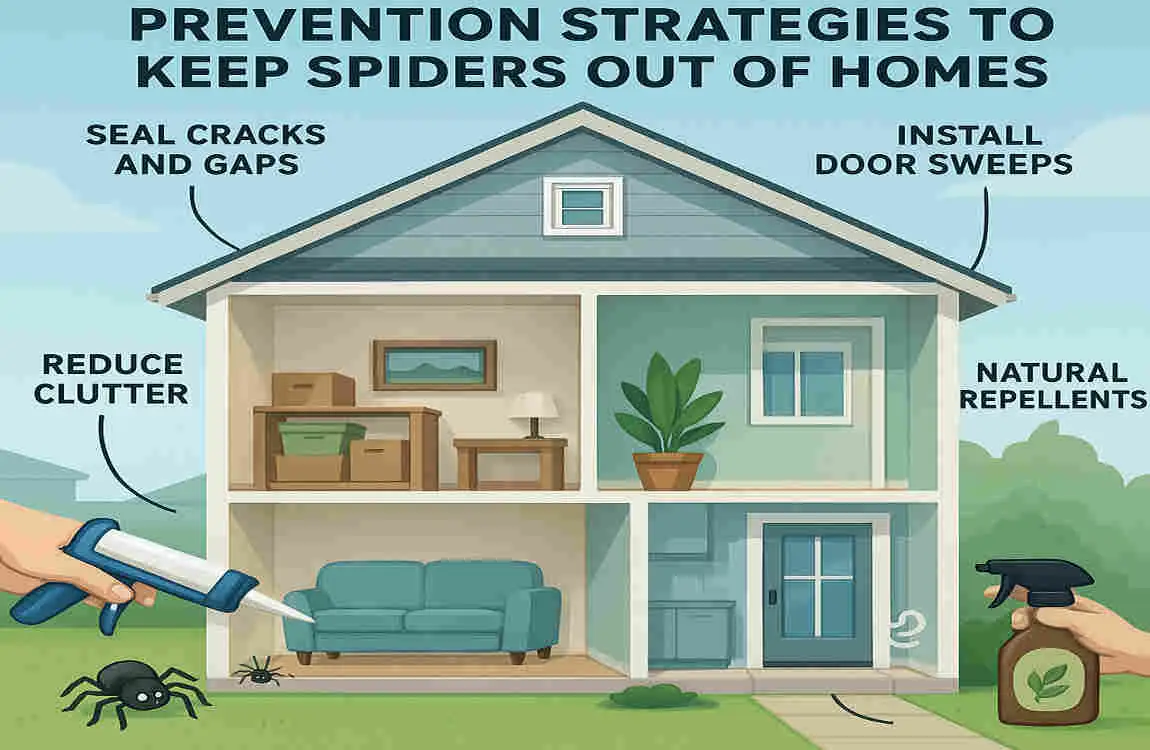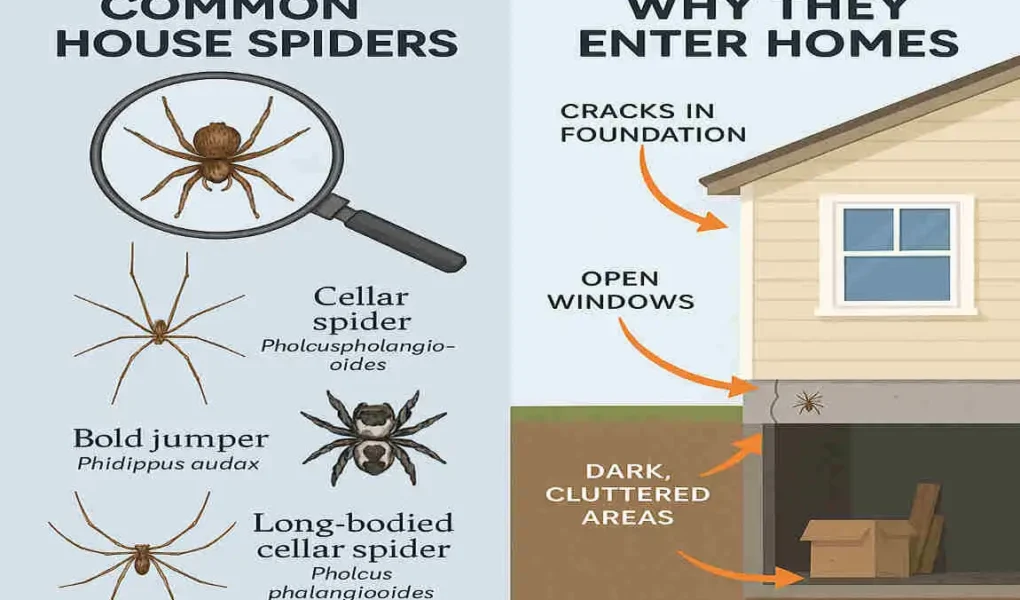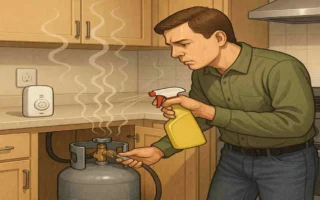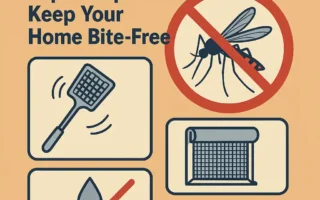Have you ever spotted a spider scurrying across your living room floor and wondered, “Why is this eight-legged intruder here?” It’s a common frustration for homeowners and renters alike. Picture this: You’re relaxing on the couch, and suddenly, there it is—dangling from the ceiling or hiding in a corner. That moment of surprise often leads to bigger questions about why spiders come inside the house in the first place.
Understanding why spiders come inside the house isn’t just about satisfying curiosity. It empowers you to take control of your space. Spiders aren’t out to get you; basic needs like food and shelter drive them. But knowing the reasons behind their visits can help you prevent them, keeping your home clean comfortable and pest-free.
Understanding Spider Behavior
Spiders are fascinating creatures, aren’t they? At their core, they’re arachnids—not insects—with eight legs and bodies divided into two main parts: the cephalothorax (that’s the head and chest combo) and the abdomen. They spin silk webs, but not all do it for catching prey; some use it for shelter or travel. Knowing these basics helps you understand why spiders come inside the house—it’s all tied to their instincts.
Spiders follow simple Survival rules. They need food, a safe spot to hide, moisture to stay hydrated, and opportunities to mate. Imagine you’re a spider: You’d chase whatever keeps you alive and thriving. In the wild, they hunt bugs, build homes in crevices, and seek out damp areas. But when the outdoors get tough, your house looks pretty inviting.
Let’s break it down further. Food is a significant driver—spiders are natural predators, gobbling up flies, ants, and other small pests. Shelter protects them from predators and harsh weather. Moisture is key because spiders can dry out easily. And mating? That’s when they get extra active, searching for partners or places to lay eggs.
You might wonder about the types of spiders that sneak indoors. Common ones include house spiders, which are small and brownish, wolf spiders that are larger and hairy, and cellar spiders with their long, skinny legs. These species adapt well to human environments. For instance, house spiders love quiet corners, while wolf spiders roam floors hunting prey.
Environmental factors also play a significant role. Think about temperature changes—spiders prefer moderate warmth, around 70-80 degrees Fahrenheit. If it’s too hot or cold outside, they head indoors. Humidity levels matter as well; dry air outdoors pushes them toward your moist bathroom or kitchen.
Seasonal shifts influence this behavior. In fall, as days shorten, spiders sense winter coming and seek warmer spots. Human activities, such as landscaping or construction, can disrupt their outdoor homes, forcing them to move inside.
Have you ever considered how your yard affects this? Overgrown bushes or leaf piles create spider highways right to your door. By understanding these instincts, you start seeing why spiders come inside the house, not as random, but as a logical response to their needs.
We’ll build on this in the following sections, but for now, reflect on your home. Do you have areas that mimic a spider’s ideal habitat? Spotting these early can save you hassle.
Primary Reasons Why Spiders Come Inside the House
Now that we’ve covered spider basics, let’s zero in on the main culprits behind why spiders come inside the house. It’s rarely just one thing—often, it’s a mix of attractions. By identifying these, you can address them head-on.
Food Source Attraction
Spiders don’t enter your home for fun; they follow their next meal. Insects are their primary food, so if your house has bugs, spiders will tag along. It’s like a dinner invitation they can’t refuse.
Picture this: A fly buzzes around your kitchen light. A spider senses it and slips in through a crack. Suddenly, your home becomes a hunting ground. If you have an ongoing insect issue, spiders multiply as they feast.
What draws those insects inside? Several everyday things:
- Bright lights at night attract moths and flies.
- Food crumbs or spills lure ants and roaches.
- Indoor plants can harbor aphids or gnats.
Address these, and you cut off the spiders’ food supply. Have you checked your kitchen counters lately? A quick wipe-down could make a difference.
Seeking Shelter and Safety
Spiders crave safe, cozy spots away from threats. Outdoors, they face birds, rain, and wind. Your house offers undisturbed nooks—like attics or basements—that feel like paradise.
They prefer warmth, especially in cooler months. If outdoor temperatures drop below 50 degrees, spiders seek your heated interiors. Humidity is another draw; damp areas like laundry rooms provide the moisture they need to thrive.
Seasonal changes amp this up. In winter, spiders hunker down indoors to survive the cold. Come spring, they might emerge, but prevention starts now. Think about your home’s cozy corners—do they scream “spider hotel”?
Reproduction and Breeding Needs
Mating season turns spiders into house hunters. Females look for secure places to lay eggs, often in hidden spots like behind furniture or in closets. Males roam in search of mates, increasing indoor sightings.
Egg sacs—those silky pouches—appear in quiet areas. A single sac can hold hundreds of eggs, leading to more spiders if not addressed. Indoor warmth speeds up hatching, making your home a breeding ground.
Have you noticed webs in unused rooms? That’s a clue. Understanding this helps explain sudden spider booms.
Environmental Triggers
Weather plays a significant role in why spiders coming inside the house. Heavy rain floods outdoor habitats, pushing spiders toward dry indoors. Strong winds scatter them, and cold snaps force migration.
Human disruptions matter too. Mowing the lawn or trimming bushes can destroy webs, sending spiders scrambling inside. Even nearby construction rattles their world.
Consider your local weather patterns. If storms are frequent, spiders might see your home as a refuge. By staying aware, you can predict and prevent entries.
These reasons interconnect—food leads to shelter, which aids breeding. Spotting the patterns in your home is key. What’s drawing spiders to yours?
How to Identify Why Spiders Are Entering Your Home

Spotting why spiders come inside the house requires detective work. Don’t worry—it’s simpler than it sounds. Let’s walk through the signs and methods together.
Start by looking for clues. If you see insect droppings (tiny black specks) or live bugs, that’s a food source alert. Flies near windows or ants in the pantry mean spiders aren’t far behind.
Next, inspect entry points. Cracks in walls, gaps under doors, or torn window screens are highways for spiders. Use a flashlight to check vents and pipes—spiders squeeze through tiny spaces.
Timing offers hints, too. More spiders in the fall? That’s seasonal shelter-seeking. Spring sightings might be tied to breeding. Track when you spot them to deduce motivations.
Identifying spider species helps. House spiders build messy webs; wolf spiders don’t web but hunt on floors. Web types reveal behaviors—funnel webs suggest shelter needs, while orb webs point to food hunting.
Observe patterns. If spiders cluster in damp areas, moisture is the draw. Active at night? They’re likely following insects.
To make this more straightforward, here’s a table comparing common indoor spider species and what their presence might indicate:
Spider Species Appearance Web Type Likely Reason for Entering Common Indoor Spots
House Spider Small, brown, with striped legs Irregular, cobweb-like Food (insects) and shelter Corners, ceilings
Wolf Spider Large, hairy, dark brown None (hunters) Seeking prey or warmth Floors, basements
Cellar Spider Long, thin legs, pale body. Loose, tangled. Moisture and breeding. Damp areas like bathrooms
Jumping Spider Compact, colorful, significant eyes. None (jumpers). Following insects: Windowsills, plants
Use this table as a quick reference. Spot a wolf spider? Check for bugs on the floor.
Engage your senses—listen for buzzing insects or feel for drafts at doors. By piecing these together, you’ll uncover why spiders come inside the house in your specific situation. Ready to play detective in your home?
Common Entry Points and House Features That Attract Spiders
Your home’s features can unknowingly roll out the welcome mat for spiders. Let’s explore how, so you can fix them.
Typical entry points include gaps around windows, worn door seals, and vents without screens. Spiders slip through openings as small as 1/8 inch. Check your foundation for cracks—rain can widen them, inviting entries.
Indoors, clutter creates hiding spots—piles of boxes or unused furniture offer perfect shelter. Moisture-prone areas, such as leaky faucets or humid basements, attract spiders seeking hydration.
Outdoor landscaping matters too. Bushes touching walls provide bridges for spiders. Mulch piles near entrances harbor insects, which lure spiders inside.
Poor maintenance amplifies risks. Unsealed pipes or neglected attics signal “easy access.” Regular checks prevent this.
Think about your setup. Do plants hug your exterior walls? Trimming them back could reduce spider traffic. By addressing these, you tackle why spiders come inside the house at the source.
Practical Prevention Strategies to Keep Spiders Out
Prevention is your best defense against why spiders come inside the house. Let’s get practical with steps you can take today.
First, inspect and seal entry points. Walk around your home with caulk and weatherstripping. Fill cracks and install door sweeps—simple fixes that block spiders.
Reduce insect prey by keeping things house spider clean. Vacuum regularly, wipe surfaces, and store food in sealed containers. Consider natural pest controls, such as diatomaceous earth, for bug control.
Manage moisture with dehumidifiers in basements or fans in bathrooms. Fix leaks promptly to dry out spider-friendly zones.
Declutter storage areas. Organize boxes and clear corners—spiders hate exposed spaces.
For natural repellents, try peppermint oil sprays or vinegar solutions. They deter spiders without harsh chemicals. If necessary, consider consulting professionals for treatment.
Seasonal precautions include extra vigilance in the fall: Seal windows and clear outdoor debris.
Here’s a numbered list of step-by-step prevention:
- Inspect weekly: Check doors, windows, and vents for gaps.
- Clean routinely: Vacuum webs and dust to remove attractants.
- Control bugs: Use traps or sprays to cut food sources.
- Seal and repair: Caulk cracks and fix screens.
- Monitor seasonally: Ramp up efforts in cooler months.
Implementing these keeps spiders at bay. What will you try first? Your home will thank you.
When to Consider Professional Help
Sometimes, DIY isn’t enough. If you see dozens of spiders or webs everywhere, it’s infestation time—call pros.
Health concerns matter too. Allergic reactions or bites from venomous types (like black widows) warrant expert help. Don’t risk it if you’re unsure.
Choose licensed pest control with eco-friendly options. They’ll assess why spiders come inside the house and tailor solutions.
Working with them? Share your observations for better results. Pros handle safely, giving peace of mind.




